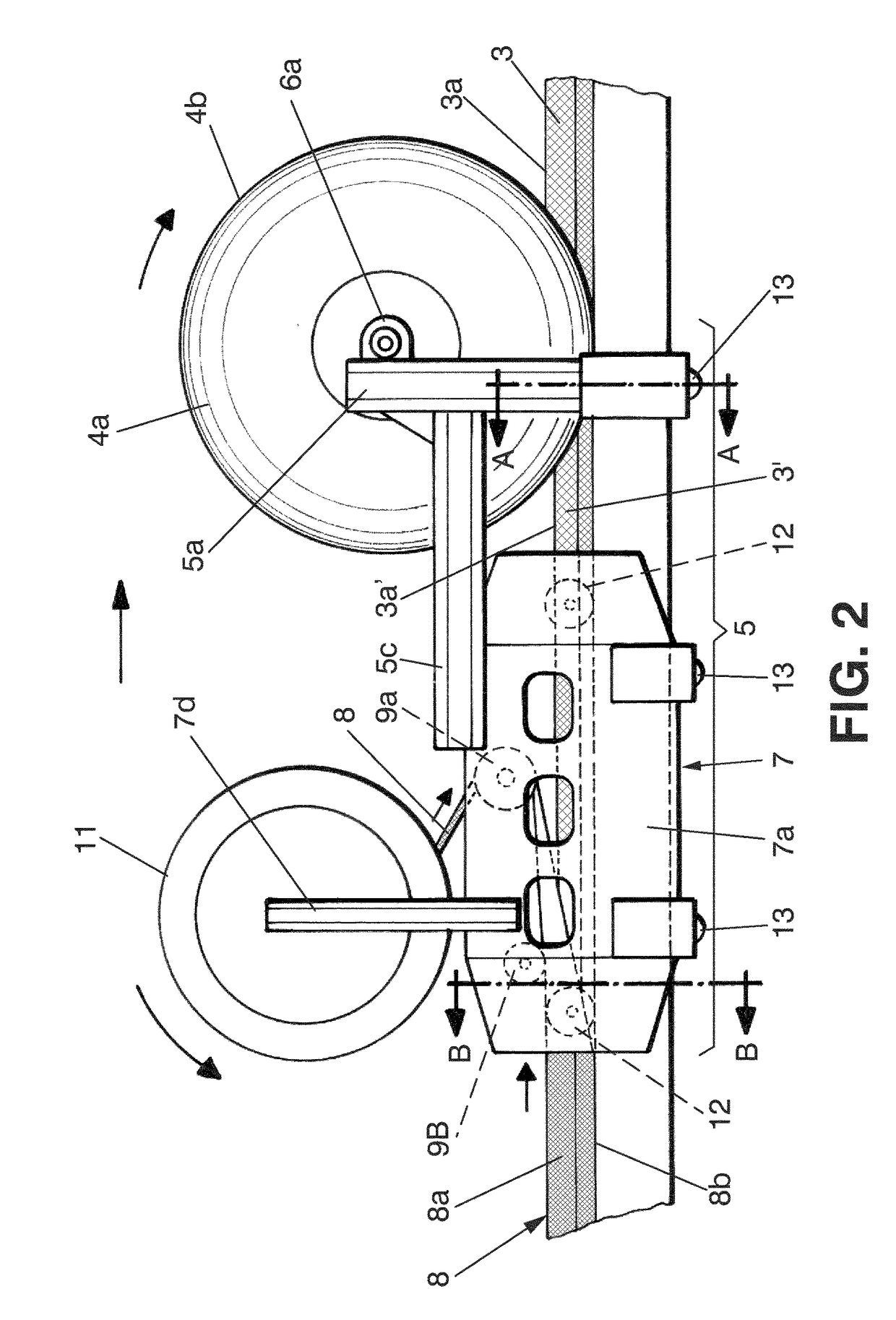System for forming stacks of composite materials
a composite material and stacking technology, applied in the field of composite material stacking system, can solve the problems of inability to manufacture more complex geometries, increase the structure of such systems, and jeopardize the quality of the part obtained, so as to reduce the number of creases, and improve the adaptability.
- Summary
- Abstract
- Description
- Claims
- Application Information
AI Technical Summary
Benefits of technology
Problems solved by technology
Method used
Image
Examples
first embodiment
[0060]FIG. 1 is a front-side perspective view of the forming system according to a the present invention;
[0061]FIG. 2 is a simplified side elevational view of the forming system shown in FIG. 1.
[0062]FIG. 3 is a simplified upper plan view of the forming system shown in FIG. 1;
[0063]FIG. 4 is a cross-section view of the system along line A-A appearing in FIG. 2;
[0064]FIG. 5 is a cross-section view of the system along line B-B appearing in FIG. 2;
[0065]FIG. 6 is a front perspective view of an embodiment of a mandrel element on which a shaped laminar material is superimposed.
[0066]FIG. 7 is a simplified view of an embodiment of a heat exchange fluid circuit for the system according to the invention
second embodiment
[0067]FIG. 8 is a simplified side elevational view of the forming system according to the present invention;
[0068]FIG. 9 is an upper plan view of the forming system shown in FIG. 8;
[0069]FIG. 10 is a cross-section view along line C-C appearing in FIG. 9;
[0070]FIG. 11 is a front perspective view of an embodiment of a multipurpose cover integrating the thermal blanket and vacuum bag functions;
third embodiment
[0071]FIG. 12 is a simplified side elevational view of the present invention;
[0072]FIG. 13 is a front-side perspective view of the compacting and forming elements present in said third embodiment;
[0073]FIG. 14 is a side elevational view corresponding to FIG. 13;
[0074]FIG. 15 is a rear-side perspective view corresponding to FIG. 13;
[0075]FIG. 16 is a partial upper plan view based on FIG. 13;
[0076]FIG. 17 is a rear-side perspective view of the positioning system of the thermal blanket present in the embodiment of FIG. 12;
[0077]FIG. 18 is a rear-side perspective view of the placement system for placing the laminar band and of the positioning system for positioning the thermal blanket present in the embodiment of FIG. 12;
[0078]FIG. 19 is a cross-section view along line E-E shown in FIG. 12;
[0079]FIG. 20 is a cross-section view along line D-D shown in FIG. 12;
[0080]FIG. 21 is a view of detail I indicated in FIG. 12;
[0081]FIG. 22 is a rear-side perspective view based on FIG. 21;
PUM
| Property | Measurement | Unit |
|---|---|---|
| diameter | aaaaa | aaaaa |
| diameter | aaaaa | aaaaa |
| diameter | aaaaa | aaaaa |
Abstract
Description
Claims
Application Information
 Login to View More
Login to View More - R&D
- Intellectual Property
- Life Sciences
- Materials
- Tech Scout
- Unparalleled Data Quality
- Higher Quality Content
- 60% Fewer Hallucinations
Browse by: Latest US Patents, China's latest patents, Technical Efficacy Thesaurus, Application Domain, Technology Topic, Popular Technical Reports.
© 2025 PatSnap. All rights reserved.Legal|Privacy policy|Modern Slavery Act Transparency Statement|Sitemap|About US| Contact US: help@patsnap.com



